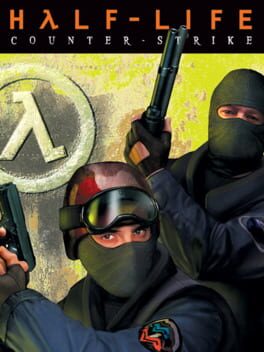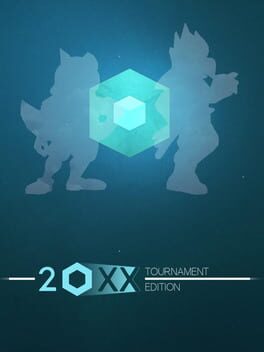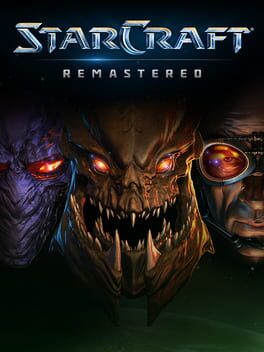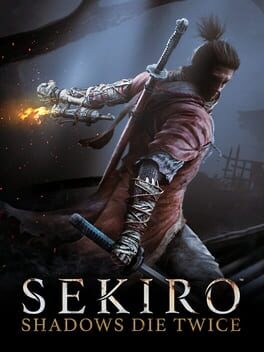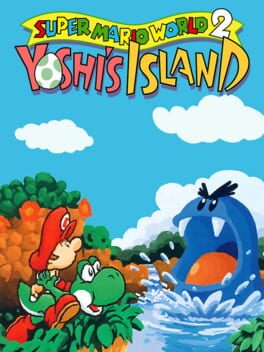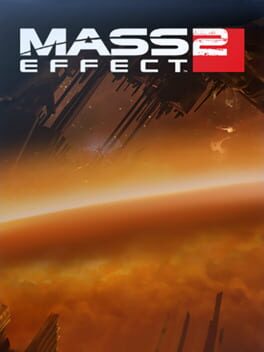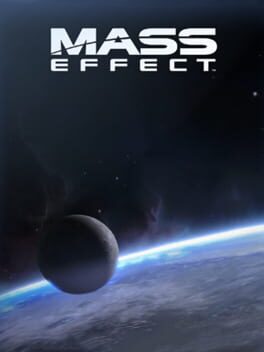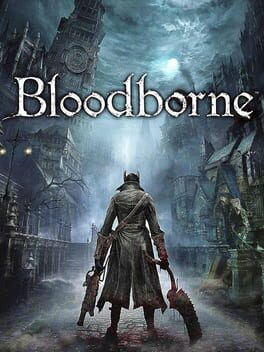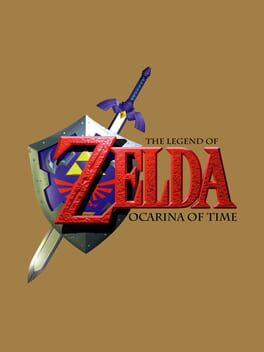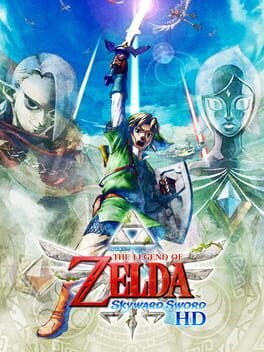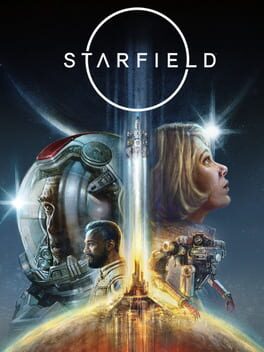MensRea96
BACKER
Bio
Not going to put everything I've played on here. I'll rate games that I play from here on out, along with related games if I feel it provides worthwhile context.
Ratings consider DLC/updates, if applicable.
Not going to put everything I've played on here. I'll rate games that I play from here on out, along with related games if I feel it provides worthwhile context.
Ratings consider DLC/updates, if applicable.
Favorite Games
082
Total Games Played
014
Played in 2024
003
Games Backloggd
Recently Played See More
Recently Reviewed See More
The trajectory of Skyward Sword’s reputation is remarkable. I don’t think a single game in the franchise has had such a drastic negative shift in public opinion. Just check Metacritic: the original has a respectable 93, while the remaster, which is almost certainly an objective improvement, has a mere 81 average. I have my theories as to why this is, which I will get into later, but it would be revisionist to claim that back in 2011 this game wasn’t revered like the other 3D Zelda games. In fact, the critical consensus at the time was clearly on board with Skyward Sword’s direction. But now, the game is the most common pick for the worst 3D Zelda game–maybe even the worst Zelda game period if it wasn’t for Zelda II. But is that valid? Well, the average quality of this franchise’s games is so high that you could just about justify saying any of them is “the worst,” and Skyward Sword certainly isn’t my favorite. However, with the changes made by this HD remaster, I actually think it’s a pretty great game that’s fallen victim to common narratives about motion controls and the Zelda franchise at large.
Once upon a time, Zelda’s overworld and dungeon design largely conformed to (apologies in advance for using the “M” word) Metroidvania design principles. Specifically, in A Link to the Past, save for few story-related bottlenecks, progression through the overworld and dungeons was entirely contingent on the items Link possessed (which is the main reason why the game is so well suited to randomizers). However, as the franchise moved forward, progression, in the overworld at least, became less about items and more about story. For example, in Twilight Princess, accessing new major areas of Hyrule was entirely contingent on story progress (with sections of the map having to be cleared of their “twilight” before proper entry). And even that game’s dungeons, which still sort of conformed to the Metroidvania framework, were much more “linear” in the sense that progression was less ambiguous and required less backtracking. I don’t mean to imply that what I’ve alleged about Twilight Princess is bad, per se. I’m just pointing out a change of direction in this series re: progression.
And it’s a significant change. You see, Zelda has never really been about intricate, one-off puzzles. Rather, Zelda games of old can be seen as one big “puzzle” of sorts, where Link’s traversal and combat capabilities continually evolve, allowing for deeper and deeper progression (hence, the “M” word). The series evolved to feature more involved tests of spatial reasoning (e.g., Eagle’s Tower in Link’s Awakening), which naturally received greater emphasis when the series jumped to 3D (e.g., Snowhead Temple in Majora’s Mask). But Link’s Awakening, Ocarina of Time, and Majora’s Mask, while inarguably more “linear” than their predecessors (though less “linear” than some may think), are still games where player satisfaction is largely grounded in untying the metaphorical knot that is those games’ overworlds, with the same kind of thing on a smaller scale in those games’ dungeons. While The Wind Waker and Twilight Princess do maintain this somewhat, progression in those two games is less player-driven (with the exception of The Wind Waker’s Triforce quest, which is highly player-driven).
Before we get to the game I’m supposed to be writing about, one more topic: combat. Specifically, 3D Zelda combat. In retrospect, it’s easy to compare the style of combat first appearing (in this series, at least) in Ocarina of Time to (apologies in advance for using the “S” word) Souls combat. And for good reason: both are relatively slow, methodical, melee-oriented combat systems with a targeting system allowing the player to circle-strafe enemies and more easily use ranged attacks. In short, you target an enemy, wait for an opening, and then strike. One downfall of Ocarina of Time compared to Dark Souls is the relative simplicity of combat in the former, making the aforementioned process somewhat boring. Really, Darknuts are the only non-boss enemies in Ocarina of Time that truly engage, but even they pale in comparison to, say, Black Knights in Dark Souls. In short, while the combat of Ocarina of Time/Majora’s Mask was sound, there was clear room for improvement. And that’s fine: neither of those games is as combat-oriented as the Souls “series” has become (see: Elden Ring). But it goes without saying that better combat would make for better games. The Wind Waker incorporated what is essentially a context-specific counterattack “QTE,” and overall improves on the combat of its predecessors, though said improvements are somewhat counterbalanced by low difficulty. Twilight Princess made strides in expanding Link’s moveset, and the application of said moveset has an appreciable level of nuance, but, once again, Darknuts are the only non-boss enemies that truly engage (and, again, low difficulty). In short, from Ocarina of Time to Twilight Princess, you’re not playing 3D Zelda for the combat. And, unfortunately, the next game in the series wouldn’t change that fact, but I’m getting ahead of myself.
Now, with the groundwork set, let’s talk about Skyward Sword. More specifically, the game’s most controversial aspect: its motion controls. For better and for worse, Nintendo often follows the idiom “in for a penny, in for a pound” when it comes to gimmicks in their games. For example, the intent to fully utilize DS hardware resulted in both Phantom Hourglass’s great touch controls and Spirit Track’s obnoxious use of the DS’s microphone. It’s largely the same story with Skyward Sword. On one hand, motion’s implementation makes ranged items’ use more intuitive and satisfying than ever while, on the other hand, motion-controlled flight and swimming can be frustrating, to say the least.
And then there’s the matter of Skyward Sword’s combat, as previously alluded to. Put simply… it’s a mixed bag. Essentially, the combat follows the template from the previous games. You lock on to individual enemies, you wait for an opening, and then you strike. However, here, there’s one critical difference: motion. There’s certainly a kind of visceral satisfaciton that comes with defeating enemies with one-to-one, motion-controlled sword strikes that just cannot exist with a standard gamepad layout. The parry mechanic adds needed depth. And, honestly, Ghirahim and Demise are good fights that demonstrate the positive qualities of Skyward Sword’s combat system. However, said system is far from the true potential of motion-controlled melee combat. The vast majority of enemies (incluidng, to a lesser extent, Ghirahim and Demise) follow a rigid design that requires the player to strike them from a limited number of angles, while punishing players for telegraphing their attacks. This would be just fine if SOME enemies did it, but almost all of them do, leading to detrimental repetition. Further, unlike Metal Gear Rising: Revengeance, where directional attacks are a small part of a larger system featuring appreciably deep combat mechanics, directional attacks ARE Skyward Sword’s combat system, more or less. There’s a parry mechanic, yes, but not much else. Importantly, though, compared to Metal Gear Rising, Skyward Sword’s combat is a relatively small part of its identity. So let’s address the rest of the game before concluding.
As I previously explained, Zelda’s core identity from A Link to the Past to Majora’s Mask is unraveling the overworld and dungeons in a Metroidvania-esque fashion. The Wind Waker and Twilight Princess marked a deviation from that, with overworld progression being more so tied to story and dungeon progression being more straightforward. Which brings us to Skyward Sword, which, for better and for worse, is a continuation of that trend. However, there is a shift in design philosophy that I believe gets overlooked. In short, Skyward Sword has what I will call Obstacle Course Level Design,™ which places greater emphasis on Link’s movement and moveset than ever before. Whether in dungeons or the overworld, the level designers consistently challenge the player to thoughtfully use Link’s movement (notably his new, somewhat limited sprinting and climbing capabilities) and items to traverse the environment. This design philosophy leads to a series of engaging, albeit rigid levels. The rigidity (which is part of what people are referring to when they call Skyward Sword “linear”) is not a problem, per se… but it IS a problem when you have to retread levels, as once you’ve solved an area’s traversal puzzle, there’s simply not much to be gained from traversing it again. And, unfortunately, Skyward Sword’s second and third acts do see re-use of levels to the game’s detriment.
In retrospective discussions of Skyward Sword, the game is often framed as diametrically opposed to Breath of the Wild. The former game is supposedly ultra-linear, while the latter is ultra-nonlinear. And while there is some validity to this characterization, in my opinion, those two games have more in common than the comparison implies. Simply, the greater emphasis on Link’s movement and moveset in Skyward Sword is continued in Breath of the Wild, albeit with a different approach. While Skyward Sword grants Link relatively limited movement and places him in rigid, intently designed levels (“obstacle courses”), Breath of the Wild greatly increases Link’s traversal potential and places him in sandboxes, with more linear gameplay segments being largely limited to “Shrines” and dungeons. Both are valid approaches, and if Skyward Sword didn’t commit the sin of re-using levels (among other issues), it’s very possible that I’d prefer it Breath of the Wild… but I digress.
For one final point of discussion, I’d like to look at one particular aspect of design in Zelda games that I've always appreciated. The games will often introduce a concept, and then iterate/expand on said concept in the immediately following dungeon (and, in some cases, continue to iterate/expand afterward). For example, in Ocarina of Time you were introduced to the hookshot before the Forest Temple, where it saw expanded use and became a natural, reoccurring part of Link's arsenal thereafter. I would argue that the 3D Zelda games that implement this savvy game design best/most extensively are Majora’s Mask (where you’re introduced to transformation masks prior to their extensive use in dungeons), Skyward Sword (where, for example, timeshift stones are heavily featured before each Lanayru dungeon), and Tears of the Kingdom (which features lengthy pre-dungeon segments that introduce key dungeon concepts, such as extensive vehicle traversal with Yunobo prior to the Fire Temple). If it's not clear, I'm a big fan of this, and I hope it becomes a stronger trend in this franchise moving forward.
Ok, one final aside. I like but don’t love Skyward Sword’s general visual aesthetic, and I like but don’t love its soundtrack. And the story is... fine. A step up from Twilight Princess at least, though I don't think Skyward Sword is all that successful at worldbuilding for the franchise (which was supposedly a goal). I could expand on those statements, but this review is already long enough as is, so I won’t.
To conclude: as I’ve said, this modified version of Skyward Sword is honestly pretty great. It’s not my favorite Zelda game, but it’s not markedly worse than the standard set by the other games in this series. So why the hate directed at this game specifically? Well, it’s time for some armchair theorizing about why other people disagree with me: everyone’s favorite internet activity. For one, the shift to non-linear design spearheaded by Breath of the Wild makes it easy to paint Skyward Sword as a relic of game design. This characterization becomes even easier when you consider Skyward Sword’s focus on motion controls, which largely lost the favor of hardcore game-likers by the end of the Wii’s lifecycle (and, let’s be honest, the game’s implementation of motion isn’t universally praiseworthy). And third, there’s a certain YouTube video that has over 10 million (!!) views that trashes the game (poorly, and also trashes Ocarina of Time, poorly). And I think in this day and age, it should surprise no one how much a highly-viewed internet think-piece can influence public opinion–especially the “opinion” of those who haven’t actually played the game being discussed. Anyway, thank you for reading my review.
8/10.
Once upon a time, Zelda’s overworld and dungeon design largely conformed to (apologies in advance for using the “M” word) Metroidvania design principles. Specifically, in A Link to the Past, save for few story-related bottlenecks, progression through the overworld and dungeons was entirely contingent on the items Link possessed (which is the main reason why the game is so well suited to randomizers). However, as the franchise moved forward, progression, in the overworld at least, became less about items and more about story. For example, in Twilight Princess, accessing new major areas of Hyrule was entirely contingent on story progress (with sections of the map having to be cleared of their “twilight” before proper entry). And even that game’s dungeons, which still sort of conformed to the Metroidvania framework, were much more “linear” in the sense that progression was less ambiguous and required less backtracking. I don’t mean to imply that what I’ve alleged about Twilight Princess is bad, per se. I’m just pointing out a change of direction in this series re: progression.
And it’s a significant change. You see, Zelda has never really been about intricate, one-off puzzles. Rather, Zelda games of old can be seen as one big “puzzle” of sorts, where Link’s traversal and combat capabilities continually evolve, allowing for deeper and deeper progression (hence, the “M” word). The series evolved to feature more involved tests of spatial reasoning (e.g., Eagle’s Tower in Link’s Awakening), which naturally received greater emphasis when the series jumped to 3D (e.g., Snowhead Temple in Majora’s Mask). But Link’s Awakening, Ocarina of Time, and Majora’s Mask, while inarguably more “linear” than their predecessors (though less “linear” than some may think), are still games where player satisfaction is largely grounded in untying the metaphorical knot that is those games’ overworlds, with the same kind of thing on a smaller scale in those games’ dungeons. While The Wind Waker and Twilight Princess do maintain this somewhat, progression in those two games is less player-driven (with the exception of The Wind Waker’s Triforce quest, which is highly player-driven).
Before we get to the game I’m supposed to be writing about, one more topic: combat. Specifically, 3D Zelda combat. In retrospect, it’s easy to compare the style of combat first appearing (in this series, at least) in Ocarina of Time to (apologies in advance for using the “S” word) Souls combat. And for good reason: both are relatively slow, methodical, melee-oriented combat systems with a targeting system allowing the player to circle-strafe enemies and more easily use ranged attacks. In short, you target an enemy, wait for an opening, and then strike. One downfall of Ocarina of Time compared to Dark Souls is the relative simplicity of combat in the former, making the aforementioned process somewhat boring. Really, Darknuts are the only non-boss enemies in Ocarina of Time that truly engage, but even they pale in comparison to, say, Black Knights in Dark Souls. In short, while the combat of Ocarina of Time/Majora’s Mask was sound, there was clear room for improvement. And that’s fine: neither of those games is as combat-oriented as the Souls “series” has become (see: Elden Ring). But it goes without saying that better combat would make for better games. The Wind Waker incorporated what is essentially a context-specific counterattack “QTE,” and overall improves on the combat of its predecessors, though said improvements are somewhat counterbalanced by low difficulty. Twilight Princess made strides in expanding Link’s moveset, and the application of said moveset has an appreciable level of nuance, but, once again, Darknuts are the only non-boss enemies that truly engage (and, again, low difficulty). In short, from Ocarina of Time to Twilight Princess, you’re not playing 3D Zelda for the combat. And, unfortunately, the next game in the series wouldn’t change that fact, but I’m getting ahead of myself.
Now, with the groundwork set, let’s talk about Skyward Sword. More specifically, the game’s most controversial aspect: its motion controls. For better and for worse, Nintendo often follows the idiom “in for a penny, in for a pound” when it comes to gimmicks in their games. For example, the intent to fully utilize DS hardware resulted in both Phantom Hourglass’s great touch controls and Spirit Track’s obnoxious use of the DS’s microphone. It’s largely the same story with Skyward Sword. On one hand, motion’s implementation makes ranged items’ use more intuitive and satisfying than ever while, on the other hand, motion-controlled flight and swimming can be frustrating, to say the least.
And then there’s the matter of Skyward Sword’s combat, as previously alluded to. Put simply… it’s a mixed bag. Essentially, the combat follows the template from the previous games. You lock on to individual enemies, you wait for an opening, and then you strike. However, here, there’s one critical difference: motion. There’s certainly a kind of visceral satisfaciton that comes with defeating enemies with one-to-one, motion-controlled sword strikes that just cannot exist with a standard gamepad layout. The parry mechanic adds needed depth. And, honestly, Ghirahim and Demise are good fights that demonstrate the positive qualities of Skyward Sword’s combat system. However, said system is far from the true potential of motion-controlled melee combat. The vast majority of enemies (incluidng, to a lesser extent, Ghirahim and Demise) follow a rigid design that requires the player to strike them from a limited number of angles, while punishing players for telegraphing their attacks. This would be just fine if SOME enemies did it, but almost all of them do, leading to detrimental repetition. Further, unlike Metal Gear Rising: Revengeance, where directional attacks are a small part of a larger system featuring appreciably deep combat mechanics, directional attacks ARE Skyward Sword’s combat system, more or less. There’s a parry mechanic, yes, but not much else. Importantly, though, compared to Metal Gear Rising, Skyward Sword’s combat is a relatively small part of its identity. So let’s address the rest of the game before concluding.
As I previously explained, Zelda’s core identity from A Link to the Past to Majora’s Mask is unraveling the overworld and dungeons in a Metroidvania-esque fashion. The Wind Waker and Twilight Princess marked a deviation from that, with overworld progression being more so tied to story and dungeon progression being more straightforward. Which brings us to Skyward Sword, which, for better and for worse, is a continuation of that trend. However, there is a shift in design philosophy that I believe gets overlooked. In short, Skyward Sword has what I will call Obstacle Course Level Design,™ which places greater emphasis on Link’s movement and moveset than ever before. Whether in dungeons or the overworld, the level designers consistently challenge the player to thoughtfully use Link’s movement (notably his new, somewhat limited sprinting and climbing capabilities) and items to traverse the environment. This design philosophy leads to a series of engaging, albeit rigid levels. The rigidity (which is part of what people are referring to when they call Skyward Sword “linear”) is not a problem, per se… but it IS a problem when you have to retread levels, as once you’ve solved an area’s traversal puzzle, there’s simply not much to be gained from traversing it again. And, unfortunately, Skyward Sword’s second and third acts do see re-use of levels to the game’s detriment.
In retrospective discussions of Skyward Sword, the game is often framed as diametrically opposed to Breath of the Wild. The former game is supposedly ultra-linear, while the latter is ultra-nonlinear. And while there is some validity to this characterization, in my opinion, those two games have more in common than the comparison implies. Simply, the greater emphasis on Link’s movement and moveset in Skyward Sword is continued in Breath of the Wild, albeit with a different approach. While Skyward Sword grants Link relatively limited movement and places him in rigid, intently designed levels (“obstacle courses”), Breath of the Wild greatly increases Link’s traversal potential and places him in sandboxes, with more linear gameplay segments being largely limited to “Shrines” and dungeons. Both are valid approaches, and if Skyward Sword didn’t commit the sin of re-using levels (among other issues), it’s very possible that I’d prefer it Breath of the Wild… but I digress.
For one final point of discussion, I’d like to look at one particular aspect of design in Zelda games that I've always appreciated. The games will often introduce a concept, and then iterate/expand on said concept in the immediately following dungeon (and, in some cases, continue to iterate/expand afterward). For example, in Ocarina of Time you were introduced to the hookshot before the Forest Temple, where it saw expanded use and became a natural, reoccurring part of Link's arsenal thereafter. I would argue that the 3D Zelda games that implement this savvy game design best/most extensively are Majora’s Mask (where you’re introduced to transformation masks prior to their extensive use in dungeons), Skyward Sword (where, for example, timeshift stones are heavily featured before each Lanayru dungeon), and Tears of the Kingdom (which features lengthy pre-dungeon segments that introduce key dungeon concepts, such as extensive vehicle traversal with Yunobo prior to the Fire Temple). If it's not clear, I'm a big fan of this, and I hope it becomes a stronger trend in this franchise moving forward.
Ok, one final aside. I like but don’t love Skyward Sword’s general visual aesthetic, and I like but don’t love its soundtrack. And the story is... fine. A step up from Twilight Princess at least, though I don't think Skyward Sword is all that successful at worldbuilding for the franchise (which was supposedly a goal). I could expand on those statements, but this review is already long enough as is, so I won’t.
To conclude: as I’ve said, this modified version of Skyward Sword is honestly pretty great. It’s not my favorite Zelda game, but it’s not markedly worse than the standard set by the other games in this series. So why the hate directed at this game specifically? Well, it’s time for some armchair theorizing about why other people disagree with me: everyone’s favorite internet activity. For one, the shift to non-linear design spearheaded by Breath of the Wild makes it easy to paint Skyward Sword as a relic of game design. This characterization becomes even easier when you consider Skyward Sword’s focus on motion controls, which largely lost the favor of hardcore game-likers by the end of the Wii’s lifecycle (and, let’s be honest, the game’s implementation of motion isn’t universally praiseworthy). And third, there’s a certain YouTube video that has over 10 million (!!) views that trashes the game (poorly, and also trashes Ocarina of Time, poorly). And I think in this day and age, it should surprise no one how much a highly-viewed internet think-piece can influence public opinion–especially the “opinion” of those who haven’t actually played the game being discussed. Anyway, thank you for reading my review.
8/10.
Starfield’s reception is interesting, at the very least. As someone who’s generally right down the middle when it comes to BGS’s output, my expectations for the game weren’t particularly high. I try my best not to be overly cynical, so I guess my expectations would have been best characterized as “cautiously optimistic.” The space setting offers a lot of potential. With games like Breath of the Wild and Tears of the Kingdom showing how great games can be built (in part) off the back of engaging traversal mechanics, the shift to space and the technology that comes with it had the potential to solve one of my biggest issues with BGS RPGs: frequently boring, meandering traversal. On the other hand, while I’ve always thought BGS’s worldbuilding to be one of its strong points, I was doubtful that what BGS would come up with would rival Fallout or the Elder Scrolls: two of the best settings in the medium. And as for the rest of the game… I was expecting more or less a continuation of Fallout 4/76: with the focus being improving the “action” side of the action-RPG that is the modern Bethesda framework, along with expanding the crafting and settlement-building systems.
What we got with Starfield, for better and for worse, is not quite that. Interestingly, the game focuses on questing: in particular, its faction questlines. And you know what? The faction questlines are… pretty good. Easily a step above what was on offer in Skyrim or Fallout 4, and even beyond Oblivion, in my opinion. From a writing standpoint, each faction at the very least contributes nicely to the worldbuilding. Narratively the quality varies between factions, but they’re all at least competently structured and feature some interesting role-playing choices (which, again, vary in quality between factions, but I digress). Well, there is one exception to my commentary on the faction questlines: the main quest, which is a faction questline of sorts. It has its moments, especially towards the end, but if I’m keeping it a buck… I don’t really like Constellation. I think the narrative of “Starfield gets good after X hours” is actually kind of valid because “X hours” is probably when the social media-poster in question completed or veered away from the main quest to do the factions.
Starfield also makes some notable gameplay improvements over previous BGS titles. Compared to Fallout 4, the gunplay is improved, general gamefeel and responsiveness are improved, and the lockpicking/hacking minigame is changed to something actually mildly engaging (and thankfully not another re-use of the mind-numbing Fallout 3 minigames). Dialogue is also improved, as it no longer follows the same predictable structure of Fallout 4’s, there’s more frequent opportunities to roleplay, and the “persuasion” minigame is, well, better than Oblivion’s, at the very least.
All of that being said, there is a significant drawback to Starfield compared to its BGS predecessors: that is, diminished potential for player-driven exploration and emergent gameplay, which is largely a consequence of the “open world” typical of BGS games being broken up into various hubs, settlements, etc., strewn about Starfield’s many planets. Most planets in Starfield are not hand-crafted, but rather feature environments and quests that procedurally generate around wherever the player chooses to land their ship. So, for players (like myself) that don’t care for the procedurally generated content, the vast majority of planets in Starfield may as well not exist. And the consequences of taking what is likely a Skyrim/Fallout 4-sized map of hand-crafted content and splitting it between planets are mixed. On one hand, there is an abstract sense of scale that comes with that design decision. However, the sense of scale is greatly limited by the unfortunate fact that traversing space is something largely done by fast-travel rather than piloting a spaceship. The player’s ship is instead more of a basecamp that’s occasionally used in gameplay segments constrained to planetary orbits.
To be honest, though… I don’t really mind Starfield’s hand-crafted content being divided between its planets. And the reason I feel that way is because, in my opinion, exploration in BGS games is overrated. As I’ve already said, from a gameplay standpoint at least, traversal in BGS games is frequently boring. Additionally, a large number of locations in, for example, Skyrim are essentially vessels for that game’s randomly generated quests, meaning that a substantial portion of its map is filler that the player might walk up to so as to enable future fast travel, but likely not otherwise engage with. This ties into the topic of Skyrim/Fallout 4's quasi-MMO structure, where you're typically expected to first interact with factions to get quests, which then make dungeon crawling and other activities more meaningful (a huge design choice that, in my opinion, is suboptimal for a supposedly exploration-oriented experience). I won’t elaborate further on this as I’m reviewing Starfield, not Skyrim or Fallout 4, but I would wager that a majority of players in those games tend to just fast-travel between major settlements anyway: meaning that the impact of Starfield’s splitting of the map may be overstated by some critics.
However, I can see why some players who perhaps approach these games less procedurally than I do would be frustrated by Bethesda’s decision here. It’s undeniable that there is a certain appeal to just roaming around a more hand-crafted map and stumbling onto bits of gameplay. To be fair, Starfield’s hand-crafted locations do afford some of that experience, but that experience is less of a focus this time around, to the dismay of some. In fact, I think the backlash to this game is largely fueled by this kind of player, rather than the typical “New Vegas good, Fallout 3/4 bad” Bethesda hater.
To me, Starfield is more or less on par with BGS’s output from the previous decade. In fact, as contrarian as this probably sounds, I may very well like this game more than Skyrim or Fallout 4. Sure, there is a certain appeal that those games have that this one doesn’t, but Starfield is overall better in the ways that matter most to me. I’ve always felt that I would prefer Oblivion/Fallout 3 to Skyrim/Fallout 4 if the former games weren’t plagued by comparatively poor design decisions (among other things) and, well, Starfield is kind of like Oblivion if it was in space and also less bad. That’s a reductive comparison, apologies.
Oh yeah. Starfield has a jetpack. Do Skyrim or Fallout 4 have a jetpack? Well, Fallout 4 technically does if you count power armor. But whatever, Starfield has a jetpack and I’m writing this aside just to express how much I like jetpacks in video games. The one in Starfield does make traversal a little more interesting, particularly in the game’s combat arenas, so it is worth bringing up, I guess.
New Game + is... kind of cool. Definitely more in concept than in execution, however, but I enjoyed how it ties into the main story. There 's also an interesting ludonarrative angle to it, but I can't exactly explain that without delving into spoilers, and frankly it's kind of superficial anyway, so whatever.
Before I conclude, one final aside: while Starfield's setting is expectedly a downgrade from TES and Fallout, it's at least competent unlike that of, say, The Outer Worlds. Not super engrossing or anything, I just mildly enjoyed the worldbuild and general aesthetic. And Skyrim/Falllout 4 didn't come close to fully utilizing those settings' potential anyway, so perhaps the drawback of Starfield's setting is not as significant as it maybe should be in theory.
To some extent, I feel bad for Bethesda. I mean, they’re owned by Microsoft so they’ll always be fine financially, but Starfield in my opinion represents an honest response to criticism. People famously (and annoyingly) said that “Fallout 4 is a good game but a bad Fallout game” (most of whom, I'd wager, never actually played Fallout 1 or 2, but I digress), so BGS made an effort to improve role-playing and quest design. And they succeeded… somewhat. Good for me, I guess.
6/10.
What we got with Starfield, for better and for worse, is not quite that. Interestingly, the game focuses on questing: in particular, its faction questlines. And you know what? The faction questlines are… pretty good. Easily a step above what was on offer in Skyrim or Fallout 4, and even beyond Oblivion, in my opinion. From a writing standpoint, each faction at the very least contributes nicely to the worldbuilding. Narratively the quality varies between factions, but they’re all at least competently structured and feature some interesting role-playing choices (which, again, vary in quality between factions, but I digress). Well, there is one exception to my commentary on the faction questlines: the main quest, which is a faction questline of sorts. It has its moments, especially towards the end, but if I’m keeping it a buck… I don’t really like Constellation. I think the narrative of “Starfield gets good after X hours” is actually kind of valid because “X hours” is probably when the social media-poster in question completed or veered away from the main quest to do the factions.
Starfield also makes some notable gameplay improvements over previous BGS titles. Compared to Fallout 4, the gunplay is improved, general gamefeel and responsiveness are improved, and the lockpicking/hacking minigame is changed to something actually mildly engaging (and thankfully not another re-use of the mind-numbing Fallout 3 minigames). Dialogue is also improved, as it no longer follows the same predictable structure of Fallout 4’s, there’s more frequent opportunities to roleplay, and the “persuasion” minigame is, well, better than Oblivion’s, at the very least.
All of that being said, there is a significant drawback to Starfield compared to its BGS predecessors: that is, diminished potential for player-driven exploration and emergent gameplay, which is largely a consequence of the “open world” typical of BGS games being broken up into various hubs, settlements, etc., strewn about Starfield’s many planets. Most planets in Starfield are not hand-crafted, but rather feature environments and quests that procedurally generate around wherever the player chooses to land their ship. So, for players (like myself) that don’t care for the procedurally generated content, the vast majority of planets in Starfield may as well not exist. And the consequences of taking what is likely a Skyrim/Fallout 4-sized map of hand-crafted content and splitting it between planets are mixed. On one hand, there is an abstract sense of scale that comes with that design decision. However, the sense of scale is greatly limited by the unfortunate fact that traversing space is something largely done by fast-travel rather than piloting a spaceship. The player’s ship is instead more of a basecamp that’s occasionally used in gameplay segments constrained to planetary orbits.
To be honest, though… I don’t really mind Starfield’s hand-crafted content being divided between its planets. And the reason I feel that way is because, in my opinion, exploration in BGS games is overrated. As I’ve already said, from a gameplay standpoint at least, traversal in BGS games is frequently boring. Additionally, a large number of locations in, for example, Skyrim are essentially vessels for that game’s randomly generated quests, meaning that a substantial portion of its map is filler that the player might walk up to so as to enable future fast travel, but likely not otherwise engage with. This ties into the topic of Skyrim/Fallout 4's quasi-MMO structure, where you're typically expected to first interact with factions to get quests, which then make dungeon crawling and other activities more meaningful (a huge design choice that, in my opinion, is suboptimal for a supposedly exploration-oriented experience). I won’t elaborate further on this as I’m reviewing Starfield, not Skyrim or Fallout 4, but I would wager that a majority of players in those games tend to just fast-travel between major settlements anyway: meaning that the impact of Starfield’s splitting of the map may be overstated by some critics.
However, I can see why some players who perhaps approach these games less procedurally than I do would be frustrated by Bethesda’s decision here. It’s undeniable that there is a certain appeal to just roaming around a more hand-crafted map and stumbling onto bits of gameplay. To be fair, Starfield’s hand-crafted locations do afford some of that experience, but that experience is less of a focus this time around, to the dismay of some. In fact, I think the backlash to this game is largely fueled by this kind of player, rather than the typical “New Vegas good, Fallout 3/4 bad” Bethesda hater.
To me, Starfield is more or less on par with BGS’s output from the previous decade. In fact, as contrarian as this probably sounds, I may very well like this game more than Skyrim or Fallout 4. Sure, there is a certain appeal that those games have that this one doesn’t, but Starfield is overall better in the ways that matter most to me. I’ve always felt that I would prefer Oblivion/Fallout 3 to Skyrim/Fallout 4 if the former games weren’t plagued by comparatively poor design decisions (among other things) and, well, Starfield is kind of like Oblivion if it was in space and also less bad. That’s a reductive comparison, apologies.
Oh yeah. Starfield has a jetpack. Do Skyrim or Fallout 4 have a jetpack? Well, Fallout 4 technically does if you count power armor. But whatever, Starfield has a jetpack and I’m writing this aside just to express how much I like jetpacks in video games. The one in Starfield does make traversal a little more interesting, particularly in the game’s combat arenas, so it is worth bringing up, I guess.
New Game + is... kind of cool. Definitely more in concept than in execution, however, but I enjoyed how it ties into the main story. There 's also an interesting ludonarrative angle to it, but I can't exactly explain that without delving into spoilers, and frankly it's kind of superficial anyway, so whatever.
Before I conclude, one final aside: while Starfield's setting is expectedly a downgrade from TES and Fallout, it's at least competent unlike that of, say, The Outer Worlds. Not super engrossing or anything, I just mildly enjoyed the worldbuild and general aesthetic. And Skyrim/Falllout 4 didn't come close to fully utilizing those settings' potential anyway, so perhaps the drawback of Starfield's setting is not as significant as it maybe should be in theory.
To some extent, I feel bad for Bethesda. I mean, they’re owned by Microsoft so they’ll always be fine financially, but Starfield in my opinion represents an honest response to criticism. People famously (and annoyingly) said that “Fallout 4 is a good game but a bad Fallout game” (most of whom, I'd wager, never actually played Fallout 1 or 2, but I digress), so BGS made an effort to improve role-playing and quest design. And they succeeded… somewhat. Good for me, I guess.
6/10.
